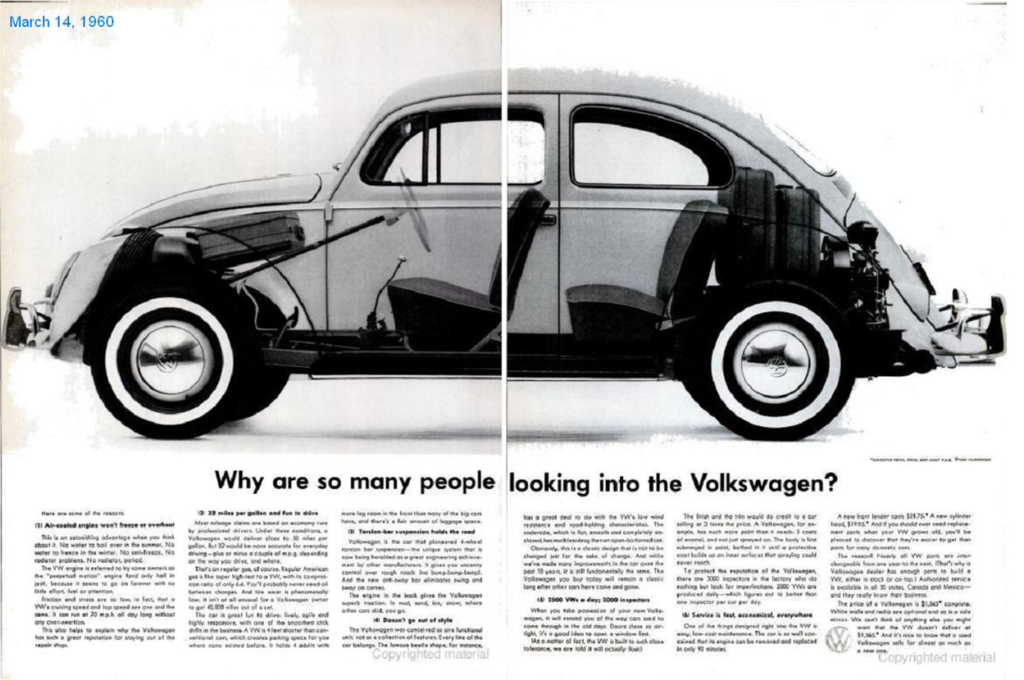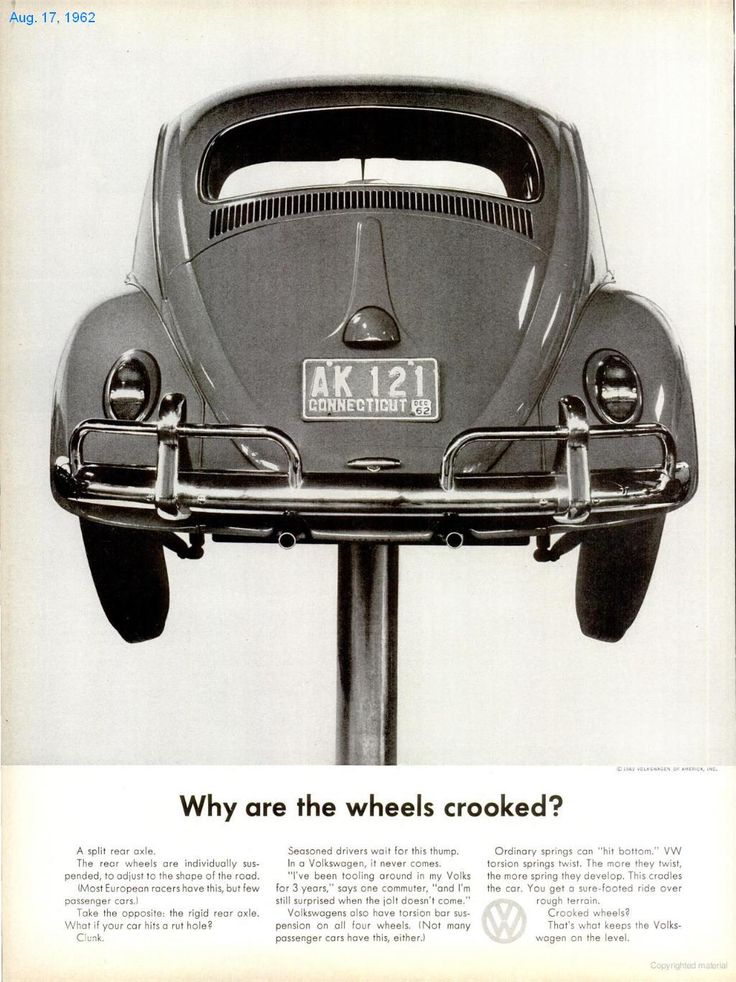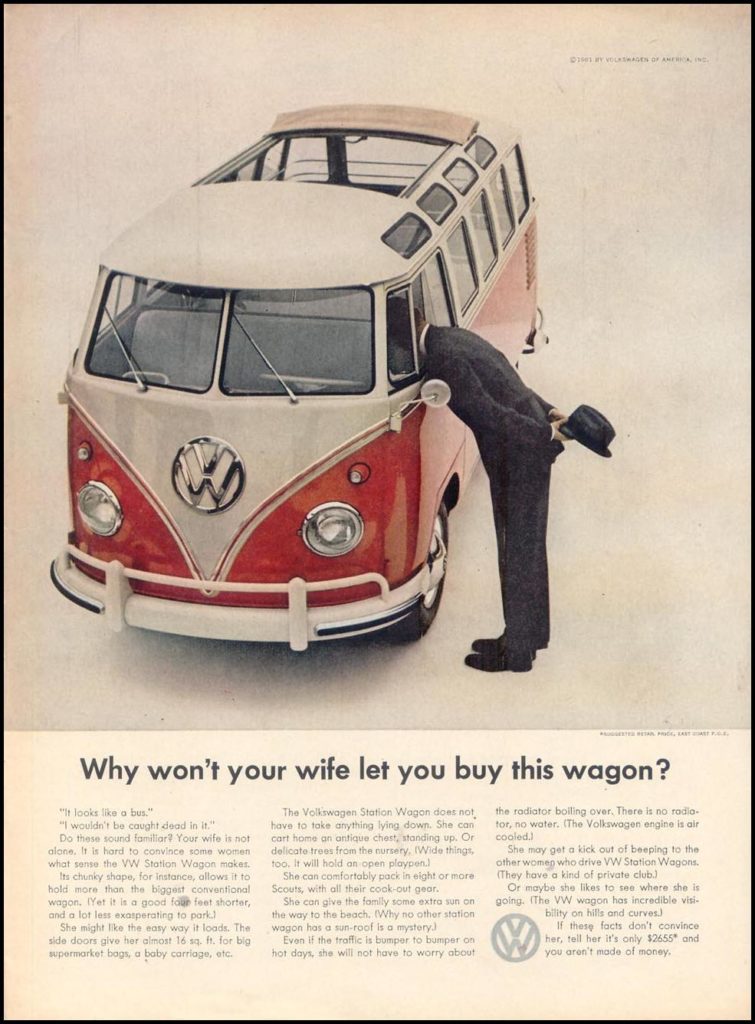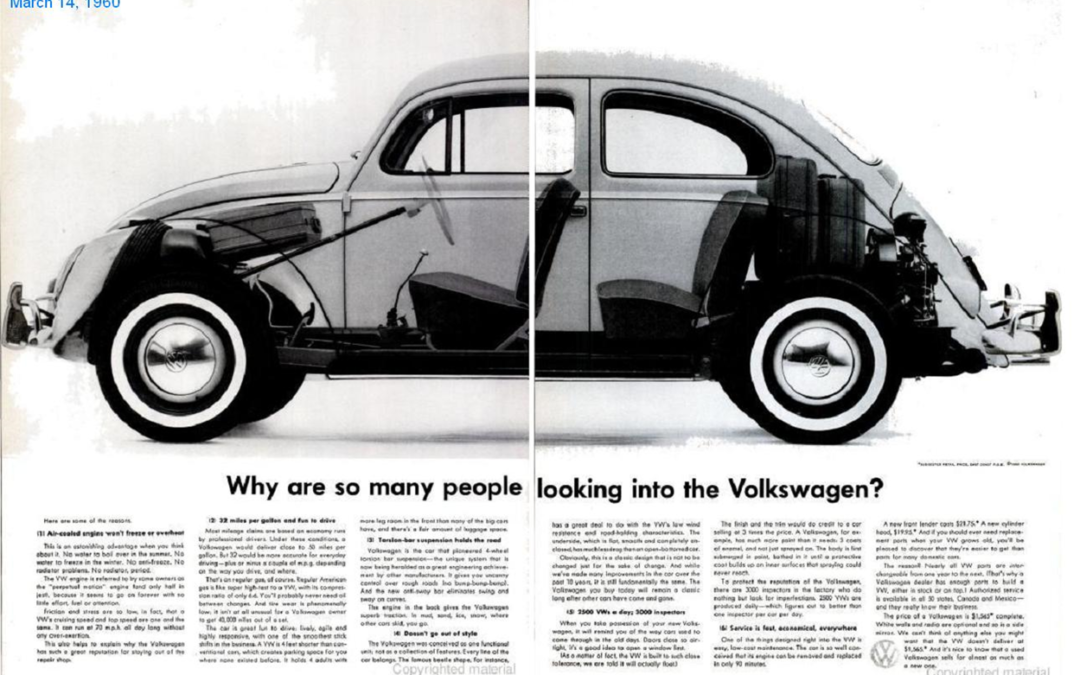Hey, want to know one of the easiest ways to grab the attention of a potential customer?
Want to learn one of the easiest ways to write a headline?
Ask a question.
Putting a simple question mark at the end of your headline helps you take a straightforward feature or claim and make it a little more interesting and a lot more compelling.
One ad agency that was a master of the question mark was Doyle, Dane, Bernbach. They are the agency that created the most successful ad campaign in history.
The campaign was for Volkswagen. Here is one of their ads.

This double-page ad features a headline that is a question. “Why are So, many people looking into the Volkswagen?”
The headline is a play on words, obviously,because the visual is a see-through image of the Volkswagen that lets you literally “look into” the Volkswagen.
When this ad was written, many people were looking into buying a Volkswagen. But no self-respecting copywriter would have written a headline that simply said, “Many people are looking into the Volkswagen.”
Boring!
But a clever copywriter, especially one who had a deadline to meet, could take that basic fact and give it a tweak by putting a question mark at the end.

Here’s another example. As you probably know, the engine in the Volkswagen wasn’t in the front. It was in the rear,mounted over the rear tires. This was a unique feature of the car that made the car lighter but gave it greater traction in the snow.
But you can’t just write a headline that says, “The engine is in the back.” That simply states a feature of the car.Plus, it prompts the reader to ask, “The engine’s in the back? So, what?”
But turning the feature into a question piques your curiosity. “That’s a good question . . . Why IS the engine in the back?” you have to read the body copy to find out.
Which brings up a vital point. Turning your headline into a question is an easy and effective way to persuade your prospective customer to read your body copy. No one wants to leave a question unanswered once their curiosity has been raised. They will read the body copy to satisfy their curiosity.

Here’s another example of an ad that focuses on a feature of the Volkswagen. The rear wheels are individually suspended to follow the shape of the road. But you can’t just say that in a headline, “The rear wheels are individually suspended.” But turning that feature into a question solves the challenge.
By the way, headlines that are questions are not just for making product features more interesting. When Volkswagen wanted to make a point about its competitors or about its potential buyers, it often did So, in the form of a question. That’s because posing an unpleasant truth as a question instead of as a fact softens the truth.

As you can see from this headline, wives were not keen on the Volkswagen station wagon when it came out. They said it looked like a bus. And it did. But you are not going to win over any husbands by telling them in your headline, “Your wife won’t let you buy this wagon.” But you can accomplish the same aim by phrasing this unpleasant fact as a question.The question mark softens the point, and makes the ad more friendly.
With a little creative thinking, you can turn just about any statistic, harsh truth, boring fact, product feature or marketplace trend into a question that makes your potential buyers stop and think for a minute.
And that, after all, is the main purpose of a headline, isn’t it?

Recent Comments